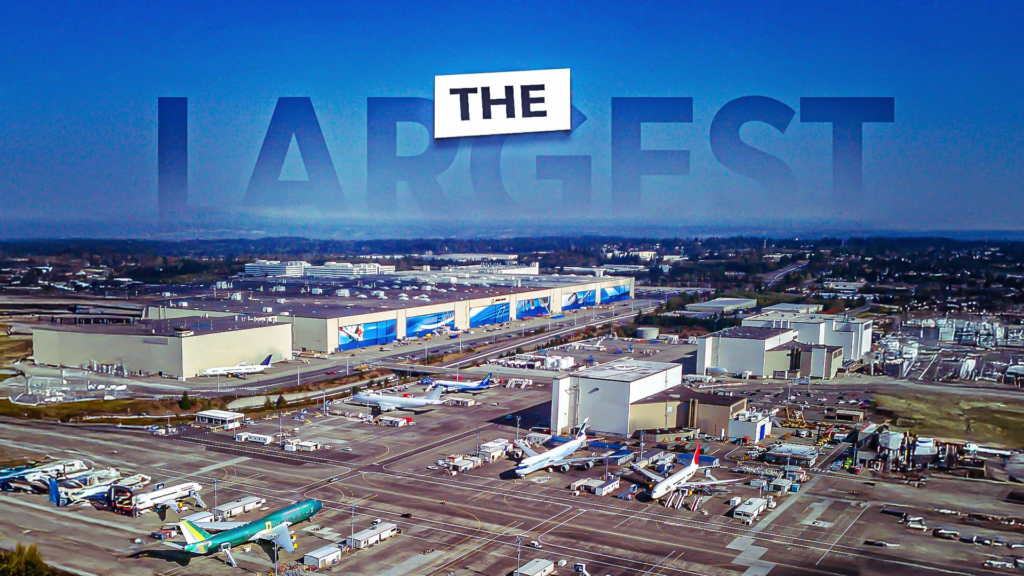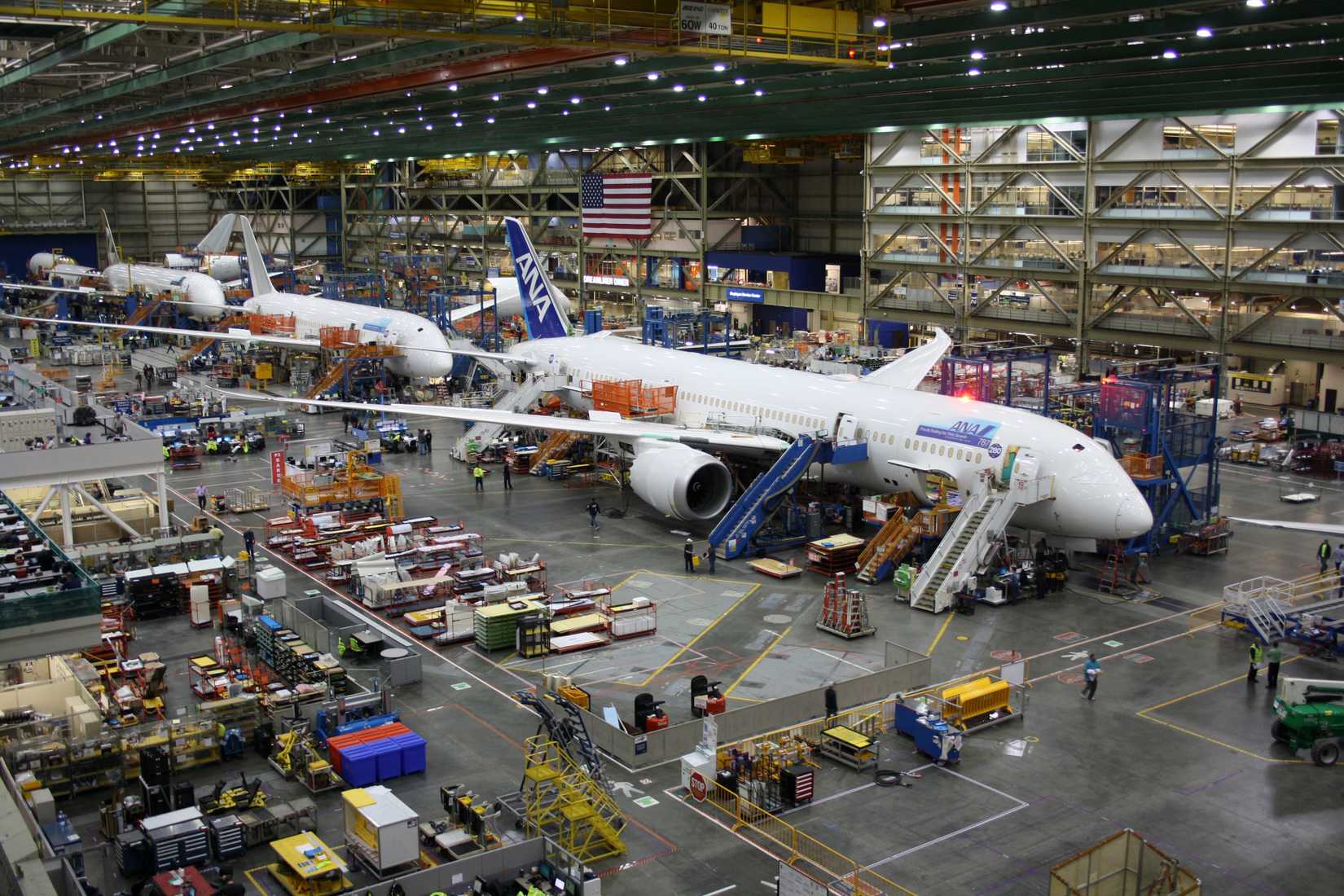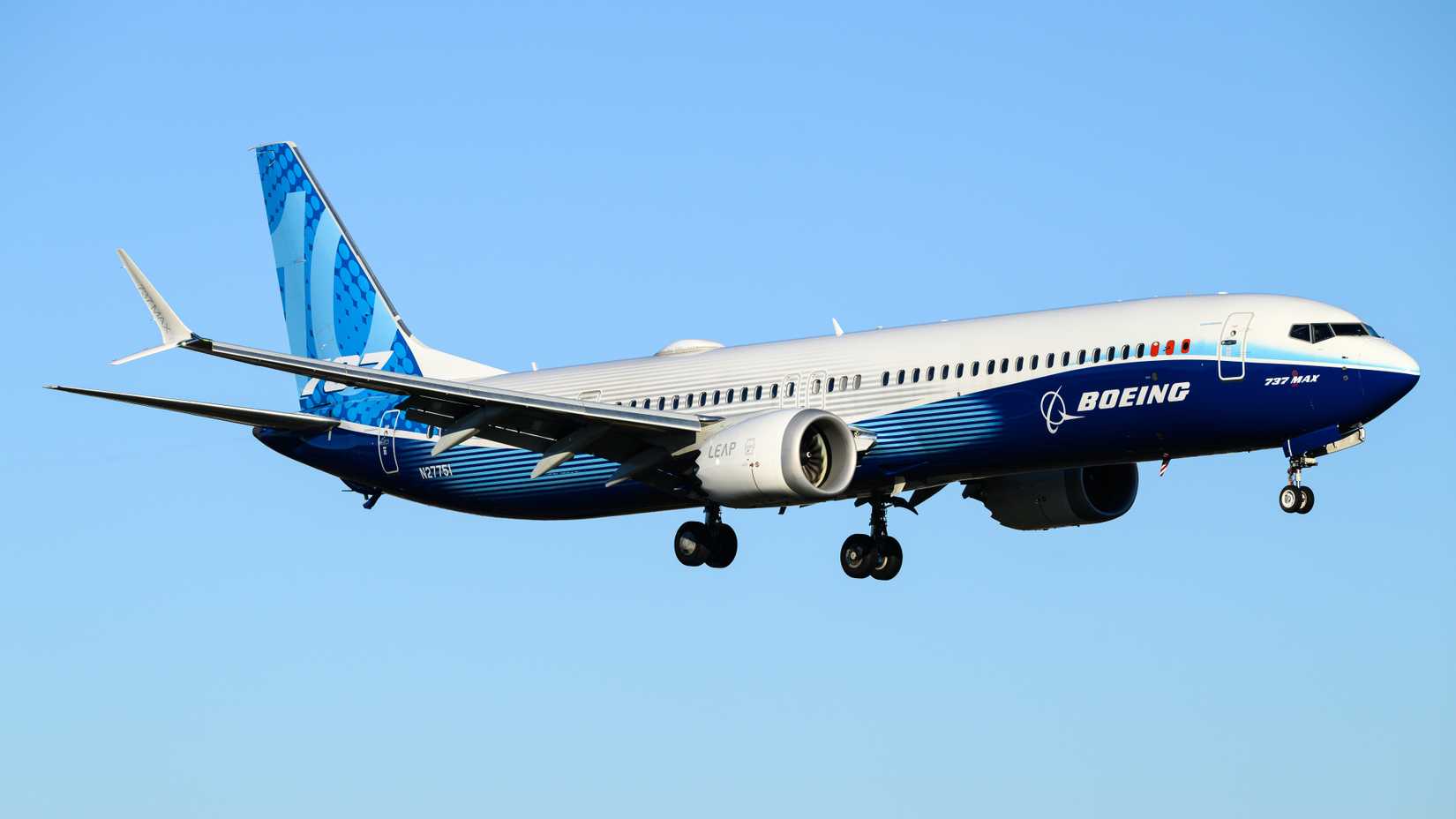Boeing is one of the most notable commercial aircraft manufacturers in the world. Boeing Commercial Airplanes is a segment of The Boeing Company, a globally recognized aerospace giant. Since the company was founded in 1916, over 100 years ago, ![]() Boeing has grown to become one of the largest aviation companies in the world, with revenue exceeding over $32 billion in 2024. Specifically, the commercial aviation industry alone employs nearly 50,000 employees around the world.
Boeing has grown to become one of the largest aviation companies in the world, with revenue exceeding over $32 billion in 2024. Specifically, the commercial aviation industry alone employs nearly 50,000 employees around the world.
These employees are located throughout the company’s major facilities, including at some of the largest manufacturing plants in the world. This includes the company’s Charleston, South Carolina, location, as well as several facilities in Washington, near the company’s headquarters in Renton, Washington. However, one of the largest facilities in this area is Boeing’s Everett production facility. This factory is one of the world’s largest buildings by volume, and is home to several major commercial aircraft production lines. Let’s take a closer look at this facility, as well as some of the aircraft it has and is currently producing.
A Brief History Of Boeing’s Everett Production Facility
Boeing’s first facilities in Everett, Washington, can be traced back to the early 1940s. Boeing originally opened its first factory at a former auto garage in October 1943. Originally, this facility was intended for producing sections of the legendary Boeing B-17 Flying Fortress during its production.
However, over the next twenty years, Boeing slowly reduced its presence in the Everett area, although it still operated small shops throughout the city. This changed in 1963, however, when Pan American World Airways placed the first order for the Boeing 747, later known as the “Queen of the Skies.” At this time, Boeing was producing the majority of its aircraft at its Renton facility. However, the Boeing 747’s incredibly large frame was much too large for the existing Renton building.
Because of this, in June 1966, Boeing purchased 780 acres north of Paine Field (PAE) for a new manufacturing facility. At the time the building construction was completed, the 158 million cubic foot building was the world’s largest building by volume. Over the years, Boeing expanded this facility, including adding 45% of volume for the Boeing 767 program in 1979 and another 50% in 1990 for the Boeing 777 program.
The Massive Boeing Everett Production Facility
Boeing’s Everett Production Facility has grown substantially over the years. Currently, the main building sits on nearly 100 acres of land and consists of over 472 million cubic feet of volume. The production lines within this building are guided by 26 overhead cranes along 31 miles of track. Additionally, this building stands at 114 feet tall and includes six hangar doors that are 82 feet tall and between 300 and 350 feet wide.
The north side of the factory connects directly to Paine Field via a taxiway. Typically, airplanes geared up for flight testing are towed from the factory to the flight line facilities at night. This flight line area connects directly to the main runway at Paine Field, which is the only runway large enough to accommodate airliners. However, Boeing also utilizes additional space on the west side of the runway and, occasionally, the crosswind runway for parking. Overall, Paine Field has the following runways:
|
Runway |
Length (m) |
Length (ft) |
Surface |
|---|---|---|---|
|
16R/34L |
2,746 meters |
9,010 feet |
Concrete/ asphalt |
|
16L/34R |
916 meters |
3,004 feet |
Asphalt |
Overall, Boeing’s entire complex sits on 1,000 total acres near Paine Field. This complex is made up of up to 200 separate buildings that sit on the north and east sides of Paine Field’s main runway. The complex also spans both sides of State Route 526, which was later nicknamed the Boeing Freeway. The complex employs approximately 30,000 employees across its various facilities. To accommodate these employees, Boeing has added a fire station, medical clinic, gymnasium, and seven restaurants to the complex.
Aircraft Currently Produced At Boeing’s Everett Production Facility
Currently, Boeing utilizes three main production lines at its Everett Production Facility. The slowest production line is for the Boeing 767. Ultimately, Boeing ceased production of 767 commercial aircraft in favor of ramping up production of the Boeing 787 Dreamliner. Even so, the company still produces freighters and military variants, such as the KC-46 Pegasus, at the Everett facility.
One of the main production lines at Boeing Everett Production Facility is the 777 series. Overall, the 777 production line has been largely revamped for Boeing 777X production, which represents the next widebody twin-engine aircraft in the family. Because of this, Boeing has rapidly slowed production of the 777 second-generation aircraft, with the last 777-300ER rolling off the production line in 2024. Even so, Boeing still produces freighter variants of this widebody, designated the 777F, which are built at the Everett facility. Boeing will soon produce the 777X at this facility once it is certified and enters into commercial service.
On the other hand, the Everett facility recently took on production of Boeing’s newest narrowbody aircraft, the 737 MAX 10. This yet-to-be-certified aircraft is the largest and most complex variant of the MAX line. Boeing also recently announced that the 737 MAX 10 will be built exclusively in Everett. This represents a shift as traditionally single-aisle aircraft have been built at Boeing’s Renton facility.
Aircraft No Longer Produced At Boeing’s Everett Production Facility
Over the years, Boeing has produced several legendary aircraft at its Everett production facility. The most notable aircraft that is no longer in production is the Boeing 747. Production of this aircraft began at the Everett facility in 1967. Over the next five decades, most Boeing 747s were produced in Everett. However, in December 2022, Boeing rolled out the final 747-8F from the Everett facility, marking the end of the legendary 747 series.
Boeing also once utilized the Everett facility to produce its 787 Dreamliner aircraft. Initially, Boeing split the production of this aircraft between the Everett facility and its Charleston, South Carolina, factory. However, in 2021, Boeing ceased production of the 787 in Everett. Instead, the company transitioned the entire production line to its Charleston facility. The last 787 Dreamliner rolled out of the Everett facility in February 2021, which was later delivered to All Nippon Airways.
Overall, Boeing ceased production of the 747 due to falling demand. The demand for such large four-engine jumbo jets had steadily declined, particularly as fuel costs rose and twin-engine widebodies became more efficient and capable. As a result, the large production line in Everett was no longer viable. Additionally, for the 787 production line, consolidation to a single production plant allowed Boeing to streamline costs and reduce the complexity of the aircraft’s production.
The Other Major Boeing Production Facilities
Boeing’s production facility in Everett is perhaps the most notable manufacturing location operated by Boeing. However, another Washington-based facility is also well-known for its production of Boeing’s narrowbody aircraft. Boeing’s facility in Renton is home to the production line for the rest of the Boeing 737 MAX family, including military variants like the P-8 Poseidon. Renton has a long history in aviation manufacturing. In World War II, it built patrol bombers and later became the birthplace of the 707, which helped introduce jet-powered aircraft to the commercial aviation market.
Another large production facility is located in South Carolina. This Charleston-based plant is notable for its continued production of the 787 Dreamliner. In recent years, Boeing consolidated production of this aircraft into a single facility, instead of splitting the production between its Everett and Charleston facilities. This also allowed Boeing to focus on the efficiency of the production line, especially as the company recently set a goal of producing 10 787s a month by 2026.
Beyond these major production facilities, Boeing has additional locations worldwide. These facilities are responsible for component assembly, interior development, and engineering. Additionally, there are engineering, tooling, propulsion design, and research & development locations spread throughout the U.S. All of these locations are responsible for the assembly, certification, and support of Boeing’s commercial aircraft.
What Is Next For Boeing’s Everett Production Facility?
Currently, the biggest change to Boeing’s Everett facility is the new addition of the 737 MAX 10 production line. The MAX 10 is expected to be built exclusively in Everett, which will help relieve production pressure on Boeing’s Renton facility. The north side of the Everett facility, which was once responsible for producing the Boeing 747 and 787, will soon be responsible for the production of the yet-to-be-certified MAX 10.
Additionally, the transition from producing the 777 to the 777X represents another modernization effort for Boeing’s widebody program. While the original 777 series became one of Boeing’s best-selling aircraft, recent technological advancements led Boeing to begin developing a next-generation widebody aircraft called the 777X. Although the program has faced delays due to certification challenges and shifting demand, Everett remains the hub for 777X final assembly.
Boeing will also soon cease production of the 767 program in the coming years. Recently, Boeing announced that it will end production of the 767F in 2027. The company has remaining orders for the freighter variant, including from major customers like UPS and FedEx. However, after these orders are fulfilled, Boeing will end another production line at the Everett facility.








